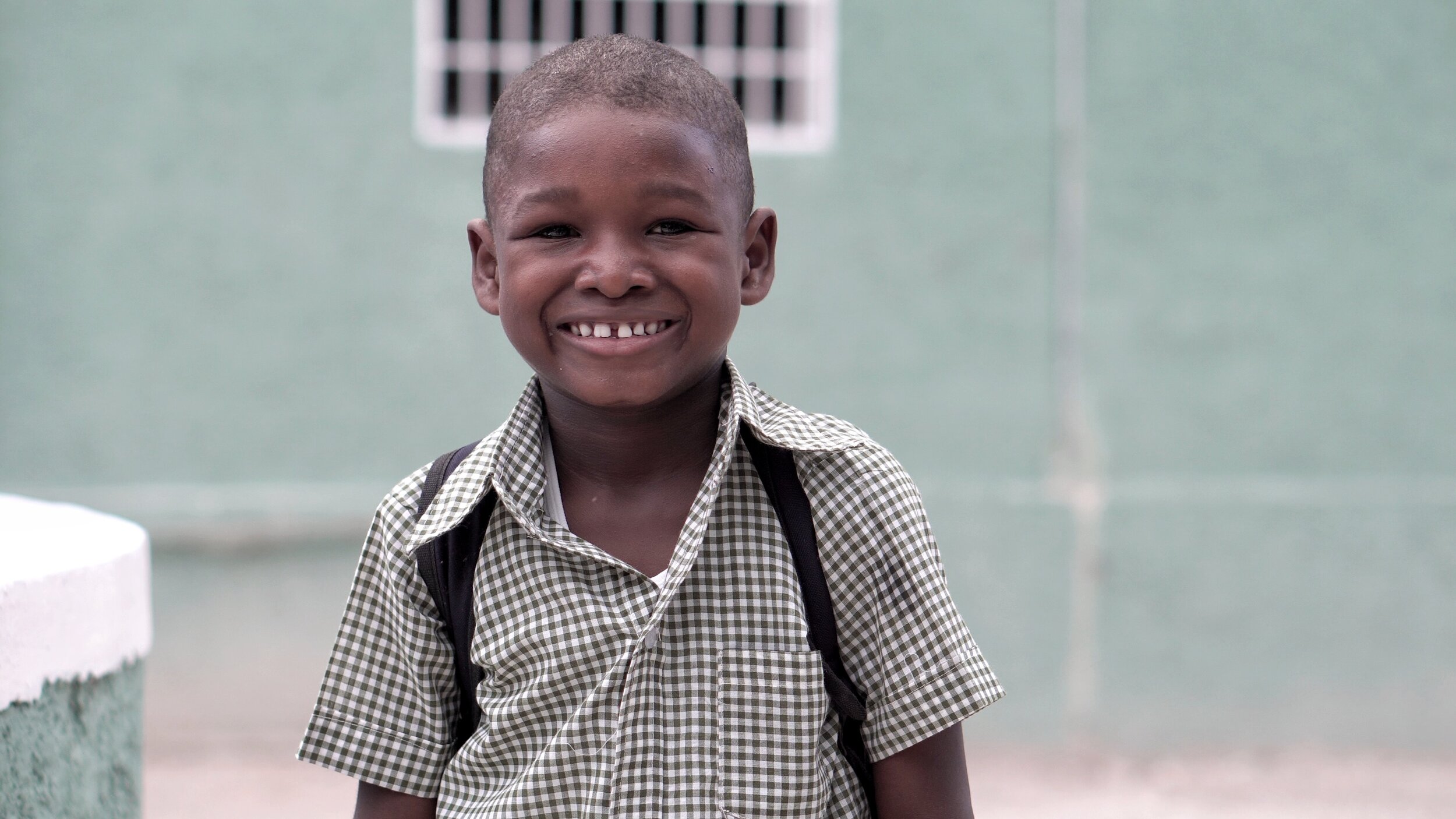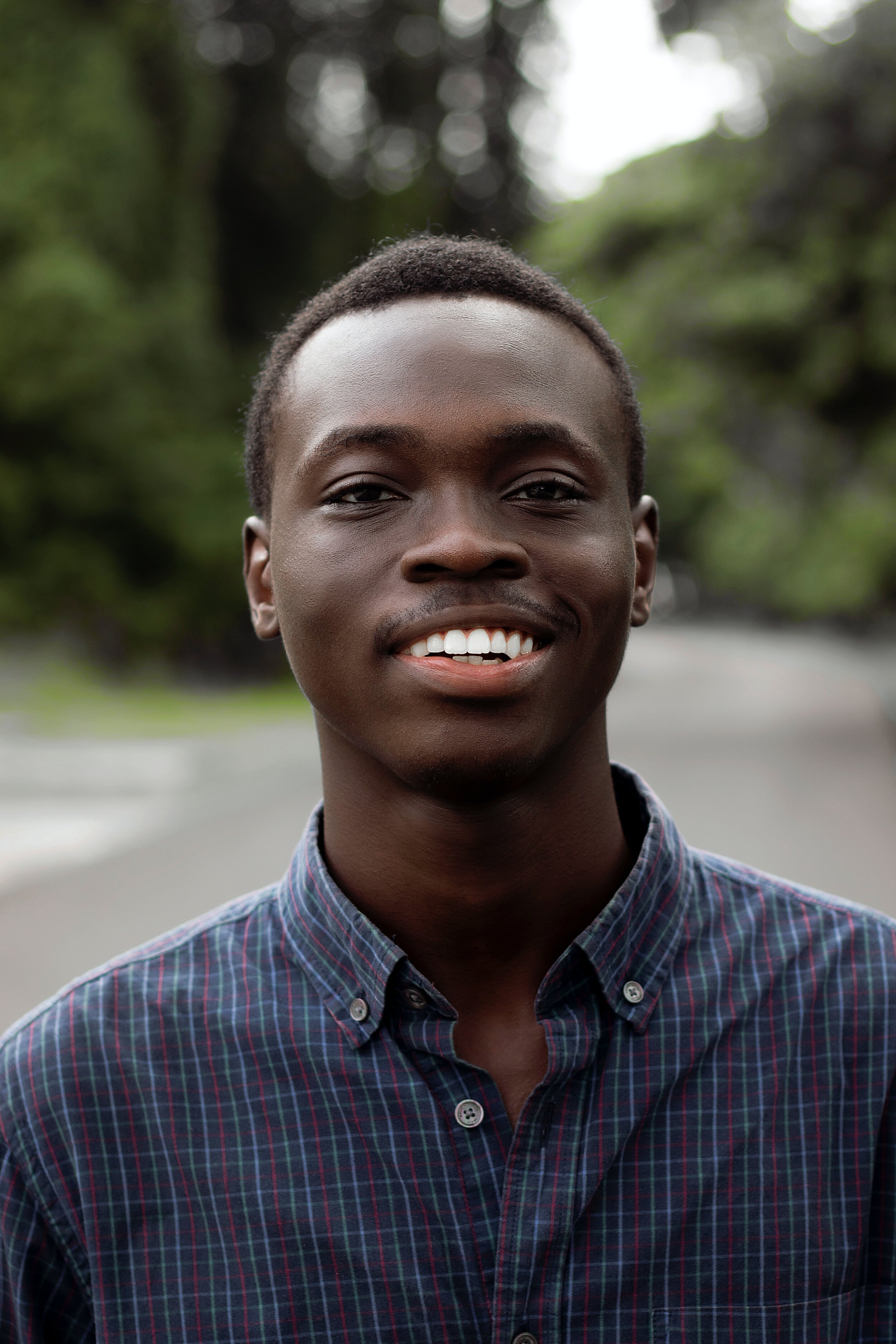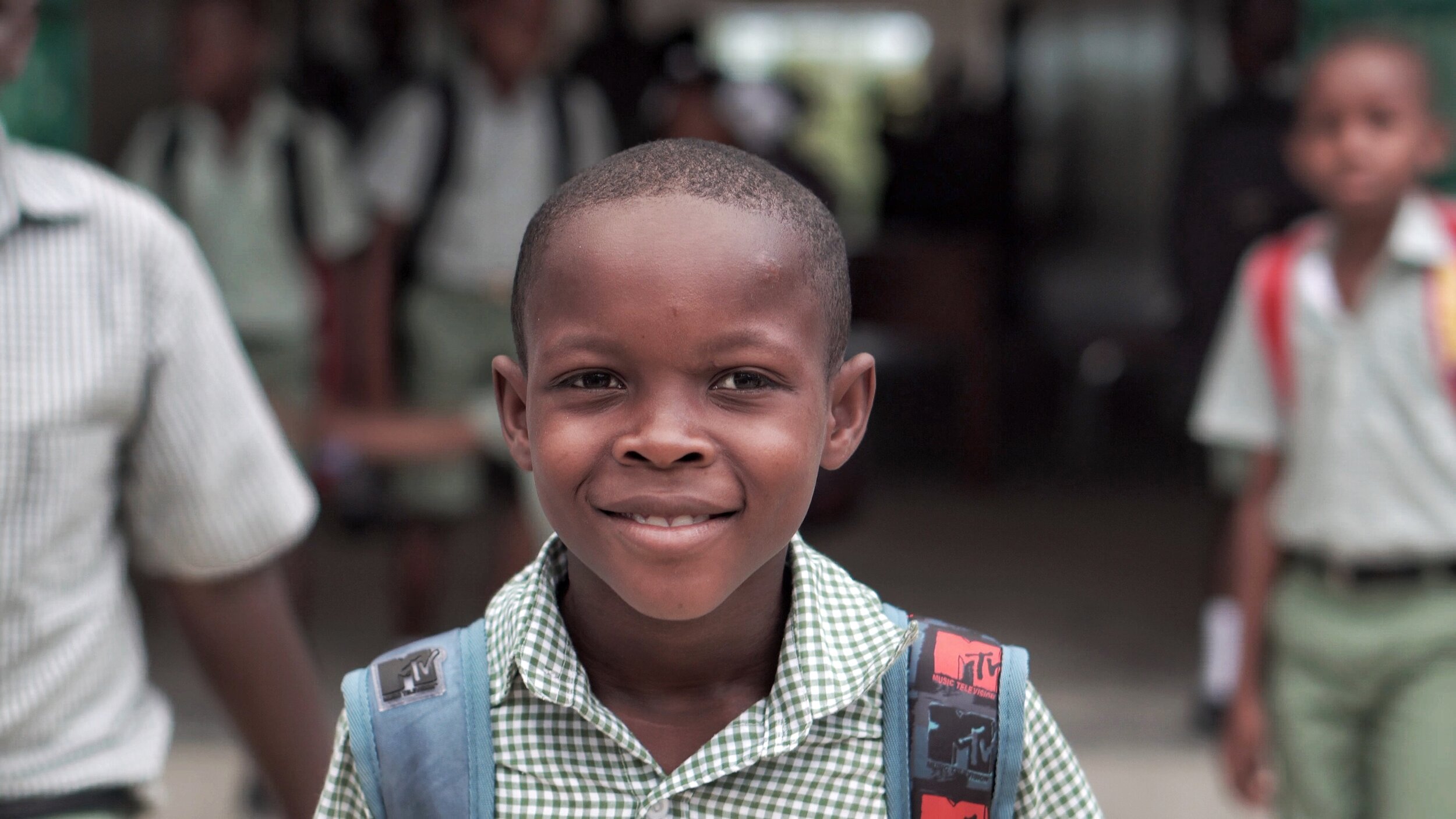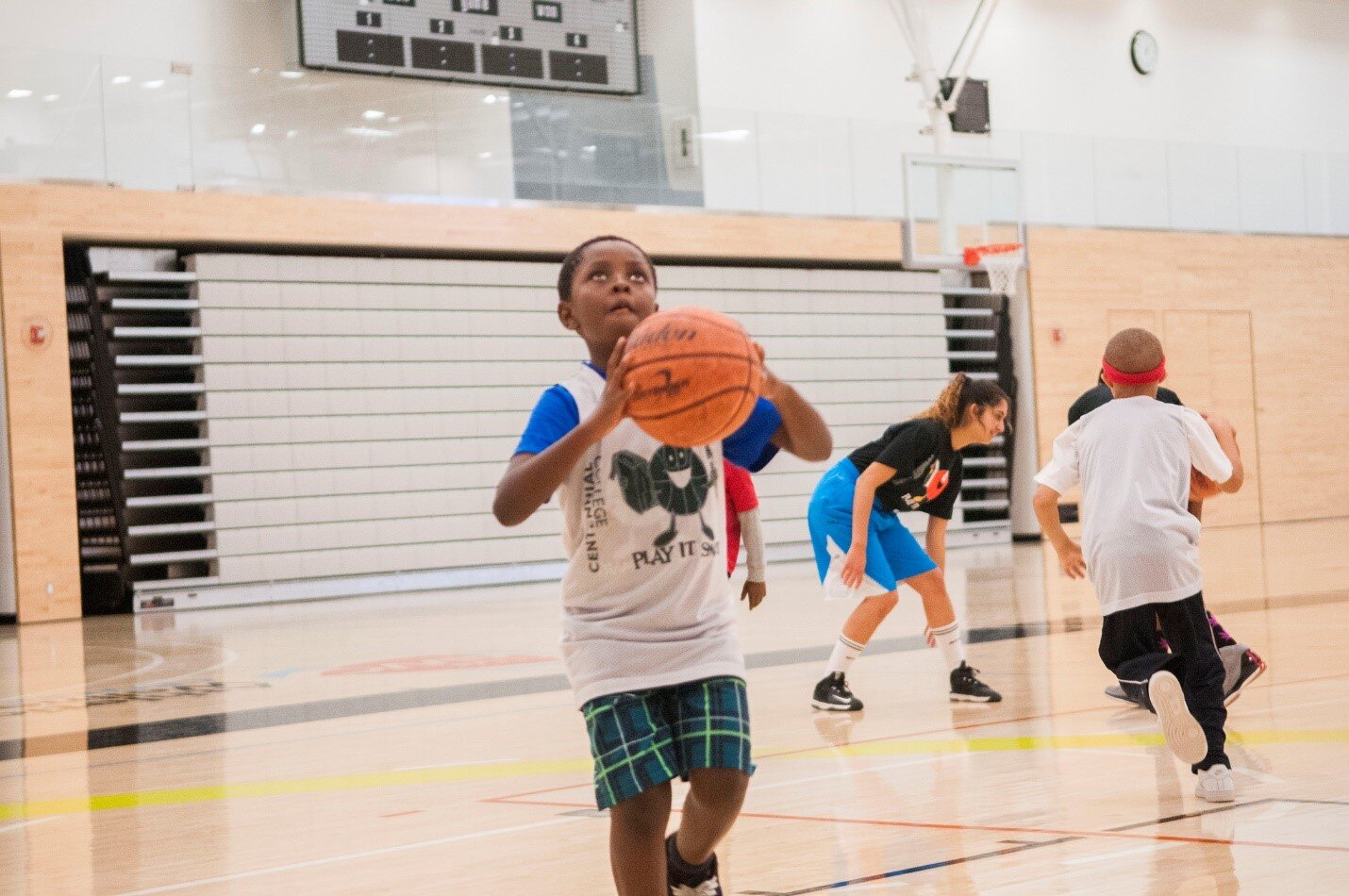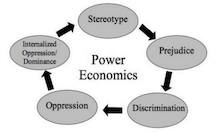
BLOG POSTS
Persistence, Not Performance
As a half Korean, half white, cis gendered woman, I recognize that I have a lot of privilege in the world. As race has come to the forefront (once again), I worried that my voice might not be a welcome one. There is a particular way in the US that Asians and Blacks have been pitted against one another (read about it here or here or in The Making of Asian America) and so that concerned me, too. Who am I to speak up now? What right do I have? However, as I watched protests and rallies, demonstrations that went well and so many that did not, I realized that I would not stay silent.
As a half Korean, half white, cis gendered woman, I recognize that I have a lot of privilege in the world. As race came to the forefront (once again), I worried that my voice might not be a welcome one. There is a particular way in the US that Asians and Blacks have been pitted against one another (read about it here or here or in The Making of Asian America by Erika Lee) and so that concerned me, too. Who am I to speak up now? What right do I have? However, as I watched protests and rallies, demonstrations that went well and so many that did not, I realized that I would not stay silent.
My work for the last 8 years has been around trauma informed schools (TIS), with a focus on what educators can do to reach students who have experienced trauma – with strategies that benefit everyone in the school community. Our program, Healthy Environments and Response to Trauma in Schools (HEARTS), is a whole-school prevention and intervention model. I know there are million and one trauma trainings in the world now, and one way that HEARTS differs is that we explicitly address Cultural Humility and Equity, the ways that racism, sexism, ableism and other structural oppressions can be experienced as trauma, and what educators can do in the face of that.
Early on in my work I presented to an engaged group of educators, who participated actively all day. They asked questions and shared their own strategies they had been using. I thought I was doing great! At the end of the day, I looked at the evaluations and found that several people had written, “This was a great training! But I don’t know why she talked about race.”
That was early on in my work as a presenter, and I realized that I had not done it well. I had not drawn the line between race and education for them at least in part because I was worried about doing it explicitly, if I was the right person or if they would want to hear it.
I am here to be explicit now.
I talk about race because I believe what Fannie Lou Hamer said, “Nobody’s free until everybody’s free.” I talk about systemic racism over and over again because I know this world cannot afford to lose even one person to its pernicious effects. We all benefit when the world is equitable.
I do it in schools because for Black children, school is often the first place they personally encounter systemic oppression, as individuals. When teachers comment on the spelling of their names, or are unwilling to learn to pronounce those names. When educators assume that Black boys talk too much, aren’t able to pay attention, or can’t sit still. When staff assume that Black girls are the ones who started the scuffle on the playground.
That is why it is imperative that all educators, from superintendents to those staff people we call on in a crisis (but often pay the least), must do this work. This is not about “not being a racist.” Being a racist is not a static character trait (more about that in How to Be An Anti-Racist, by Ibram X Kendi). We live in a racist country and we ALL do and say and think racist things, because it is part of the fabric of our systems. It is not easy. We must work to be anti-racist.
Three things educators can do
1. Educate yourselves – Y’all know how I feel about reading. Right here on this website you can see books that I consider important, but you don’t have to take my word for it. Check the NYT non-fiction best seller list – it’s full of good anti-racist books right now.
And not just non-fiction, either. We need to read books, as author Nic Stone said, “about Black people being people and doing people sh*t.”
Follow Black educators (@tiffanymjewel @readlikearockstar @laylafsaad @thetututeacher @britthawthorne @garyrgrayjr @theeducatorsroom) on your social media, listen to colleagues, participate in trainings. Join an affinity group (or start one) and talk with your people about what you are learning. Do not DM Black activists/educators and ask them to explain things to you. “Do your own work” does not mean do it alone, it means look to your affinity groups. There will be people in those groups far ahead of you, and people far behind. Your work is to accept help/re-direction and to offer help/re-direction. Your work is to keep at it.
2. DO something with that education. Internally. I encourage y’all to actually do the exercises in Me and White Supremacy, by Layla F. Saad. This book steps you through thinking about your privilege, how it shows up, and what you can do about it. When you read This Book is Anti-Racist, by Tiffany Jewel, DO the activities, write out the reflections. Get the Educator Guide, use it. When you read The New Jim Crow, by Michelle Alexander, write down the ways that your life has been enhanced by these laws. Challenge yourself! Talk in your affinity group. Get vulnerable with your people, and stay in the conversation.
As Britt Hawthorne put it, “…you are not ready to do anti-bias/anti-racist/social justice work w/ your learners if you are not actively calling in/out your co-workers…when you want to teach your learners about oppression but are not willing to advocate about it in real-time then it’s performative.” If you aren’t sure how to talk to someone about racist thoughts/language, there are many books and articles you can find online, including here and here.
The work is not to ask, What do I do IF I do or say something racist, but what will I do WHEN I do or say or think something racist? Put some thought into this.
3. Hold yourself accountable. One way to hold yourself accountable is to tell people explicitly what you are working on. I know an educator who just discovered that saying “Yaaaaas” is a cultural appropriation and is not right for her (as a non-Black person) to say (here is an article about this). She told her people that she is taking it out of her vocabulary, and asked them to remind her if she forgets. She committed with her social capital.
Once school is in session, this teacher could get her students involved. She could tell them she isn’t going to use it anymore, and why (using age appropriate language) and ask them to remind her about it. Like any good intervention, this one will take some prep work. The teacher has to be ready to make the change, and she needs to instruct students on effective communication (“You said that word again!”).
This technique gets you so much chocolate in your cake! (I’m trying to find another way to say “bang for your buck” which is so violent! Feel free to tell me your favorite).
1. She would be educating her students on cultural appropriation.
2. She would be empowering them through modeling one way to go about making a change in their own lives.
3. She is giving them some agency by letting them know they can bring it up (at least to her).
4. She can use their reminders to her as ways to model ways to call someone out – or call someone in – in a way that can be heard.
Do the work, people. We don’t have time for a performance.
(banner photo shows (my) folded arms with Nobody’s Free Until Everybody’s Free tattooed in curlicue script. Photo taken by my blind partner.)
Smile A While
Just a few minutes into my Zoom presentation on Trauma Informed Schools (TIS) recently, my lovely dog, Maite, went from fully asleep to full on alarm barking, more or less right in my face, having jumped up onto my kiddo’s bed to get close to the window. Not only could no one hear me, but I was so startled my heart rate spiked and my breath got shallow. It took me a good 30 seconds to get myself back on track. This isn’t the first time she’s startled me like that, but it hasn’t gotten any easier.
Just a few minutes into my Zoom presentation on Trauma Informed Schools (TIS) recently, my lovely dog, Maite, went from fully asleep to full on alarm barking, more or less right in my face, having jumped up onto my kiddo’s bed to get close to the window. Not only could no one hear me, but I was so startled my heart rate spiked and my breath got shallow. It took me a good 30 seconds to get myself back on track. This isn’t the first time she’s startled me like that, but it hasn’t gotten any easier.
I don’t actually have any pictures of Maite in alarm bark mode, because I’m usually to startled to take one. This one shows Maite at McClaren Park in the woods with a stick in her mouth that’s about 3 times as long as she is. There are several other dogs behind her, part of her pack when she could go with a crowd to the park.
If that had happened a few years ago when I recorded my first (very bad) webinar, I think some participants might have judged me for unprofessionalism. But now? This is the new reality of Distance (crisis) Learning. These things happen all the time these days, in the form of pets, small children, partners/roommates and other surprise sounds and sights.
And this isn’t just happening in professional trainings. It is happening in K-12 classrooms, too. In many ways, I think this is a fabulous opportunity to bridge the distance that often shows up between educators and their students. Seeing and hearing bits and pieces of “real life” is a great way to build this connection.
Pic shows smiling baby face with Asian features and no teeth
I just heard from a teacher recently how much her high schoolers appreciate it when her toddler comes into view, and I know my partner’s students like to see and hear from Maite from time to time.
One way to build Compassionate and Dependable Relationships is to help students see the grown-ups at school as part of their community, as “regular” people, with good days and hard days, who are learning and growing too. Back in the long ago, this happened more naturally, as your teachers were right from your community, your aunt, or the woman who plays piano at your church. They were people you saw outside the classroom, that you heard about in the neighborhood. Now with people moving around the country much more frequently, that isn’t often the case.
Pic shows multiple smiling faces
I encourage you to be gentle with yourself and your students. To smile when your humanity shows, because this allows them to know you are not judging them or their situations. I hear teachers doing this with such grace and I hear students responding sometimes with such glee that I feel a little less hopeless about this time of crisis learning. Smile with your students as you wrap up. You’ll all feel better for it.
Except for images I take myself, all my images come from upsplash.com a great source for free photos.
Lasting, Systemic Change
Yesterday I spent a several hours in a Zoom meeting (welcome to the new world). It was the San Francisco Unified School District Board meeting, and lots of interesting things were discussed, including grading and other plans for going forward this year. Another point of discussion was Resolution No. 204-14A1, To Establish Policies and Procedures for the San Francisco Unified School District to Provide Trauma-Informed, Coordinated Care that Promotes Resilience and Healing During and After the COVID-19 Pandemic, Commissioners Faauuga Moliga, Gabriela Lopez, and Allison M. Collins.
Yesterday I spent a several hours in a Zoom meeting (welcome to the new world). It was the San Francisco Unified School District Board meeting, and while that may not sound fun at first take, it was fantastic to see the student delegates passionately entering discussion, and to hear from so many community members. Lots of interesting things were discussed, including grading and other plans for going forward this year.
Another point of discussion was Resolution No. 204-14A1, To Establish Policies and Procedures for the San Francisco Unified School District to Provide Trauma-Informed, Coordinated Care that Promotes Resilience and Healing During and After the COVID-19 Pandemic, Commissioners Faauuga Moliga, Gabriela Lopez, and Allison M. Collins. Dr. Joyce Dorado, the co-founder of Healthy Environments and Response to Trauma in Schools (HEARTS), helped with the draft, working with Leslie Hu from Martin Luther King Jr. Academic Middle School, and I was there to speak in favor of it.
For those of y’all who don’t know, San Francisco Unified School District has been doing trauma-informed work for more than 10 years. There have even been stories about that work! All of the social workers in the district receive multiple days of training on trauma informed practices, trainings that are open to other folks, too. Nurses, administrators, school psychologists, para educators, PE teachers, and noon monitors have come to those and other trainings. Some schools have spent years specifically working on developing more trauma informed practices. Many other schools have begun that work, through trainings, consultations, wellness plans and other creative methods. School social workers have come up with many different ways to support students, families and educators. So much good work has already been done.
This resolution is in part a way to coordinate and consolidate all that work, to support both students and families, and also educators and support staff. It recognizes the way that this crisis is affecting all of us, and the way that it may impact people who have already experienced trauma, including structural racism and disparities. It acknowledges the way that those traumas are exacerbating the impact of the COVID-19 crisis. I was also heartened to see student and family voice included in the plan, directly in terms of gathering input on what’s needed.
I hope that this helps schools move toward lasting, systemic change. I’m glad the resolution passed, and I’m ready to support it in any way that I am able.
Break Time
I can hardly believe the month of March is already over. My plan was to write something the week of the 16th, but that was when the “shelter in place” order for California came down, and it flipped my world. as I’m sure it has for many of you. I laughed out loud at my previous post and my desire to decrease my hours of media. I can see that number increasing already after only 2 weeks of time at home
I can hardly believe the month of March is already over. My plan was to write a new post the week of the 16th, but that was when the shelter in place order for California came down, and it flipped my world, as I’m sure it has for many of you. I laughed out loud at my previous post and my desire to decrease my hours of media. I can see that number increasing already after only 2 weeks of time at home.
I can also see my privilege front and center. I have a car, a bit of savings, and am able to keep working (albeit virtually) with many of my clients. This means not only can I get to more resources, it also means I likely have less stress about the shelter in place. I know that if I wait, or go to another store, I will find toilet paper. It means I can still pay my rent (so far). It means that I have access to all that media I am so proud of not watching.
All that said, I am stressed. I lost a number of paying jobs with all the cancellations of conferences, and even though I have more free time, I find it’s difficult to focus on or complete tasks. I can feel myself on edge, quicker to judge others and even more likely to cry. I feel isolated and uncertain and have had to take a lot of deep breaths.
Your allostatic load (the stress placed on the body from repeated ups and downs) is probably high too, and giving yourself the opportunity to breathe, to stretch, to dance or sing – even for 30 seconds – will help keep your rider on your horse.
No one is better at taking a better than Maite, my Rottie (pictured above). Her message to me and all of you: give yourself lots of breaks. Y’all know I recommend a break every hour of the school day – go ahead and give that break to yourself no matter what you are doing these days. I know just thinking about distance learning is stressful for me.
Let’s do it together! Every hour at 15 minutes past, give yourself a 30 second break, and I’ll do it too. Let me know what are your favorites on Twitter or Instagram. #breaktime
30 Second Breaks to Decrease Stress
Sing along with the radio
Drink some water
Act out shooting a basketball or pitching a baseball
Stretch your arms up
Dance break!
You don’t have to dance as well as thedancingteacher@yahoo.com - just have fun with it. Or just watch the video. :)
Watch
Kids in my office are often astounded to hear that I don’t own a TV. They cannot imagine what we do for fun in my house. Parents often also look surprised. I am honest – I tell them I do watch Netflix and also many years of an Italian soap opera (Un Posto al Sole since 2000) – but I can still see that they are imagining that I am some kind of deeply deviant human, someone who is able to decline the screen and have fun in some strange, old fashioned way.
Kids in my office are often astounded to hear that I don’t own a TV. They cannot imagine what we do for fun in my house. Parents often also look surprised. I am honest – I tell them I do watch Netflix and also many years of an Italian soap opera (Un Posto al Sole since 2000) – but I can still see that they are imagining that I am some kind of deeply deviant human, someone who is able to decline the screen and have fun in some strange, old fashioned way.
The truth is I love TV just like lots of other people. I missed out on American TV when we lived in Holland, so when I got to the US, I binged. I literally watched TV from the minute I woke up (Electric Company) to the moment I fell asleep (The Honeymooners). I didn’t have any friends at first and the Georgia heat was so oppressive I would come in from school and sit right down and watch hours of sitcoms. My family watched TV during dinner (I Dream of Jeannie, The Carol Burnett Show) then current shows, The Six Million Dollar Man, Eight is Enough, The Incredible Hulk, in the evening. You get the idea.

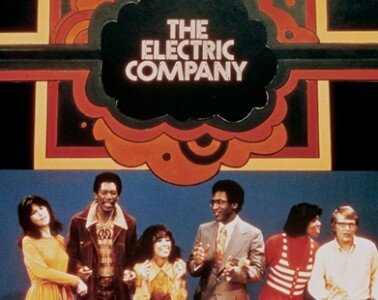
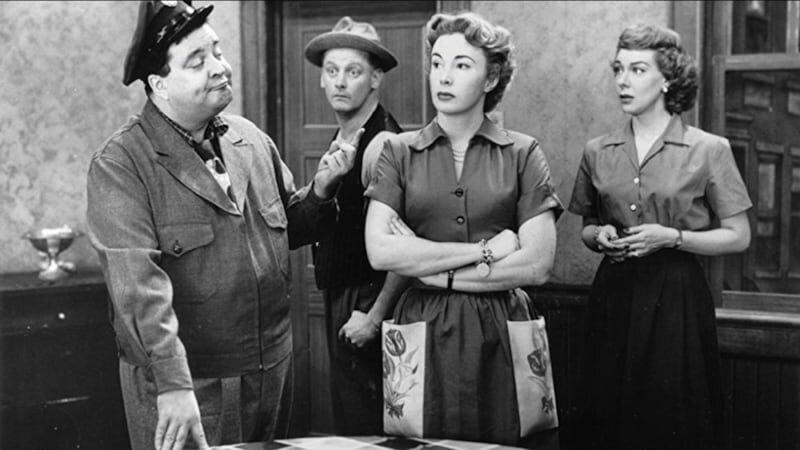
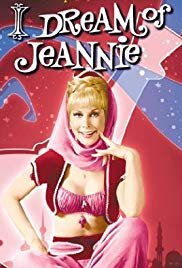
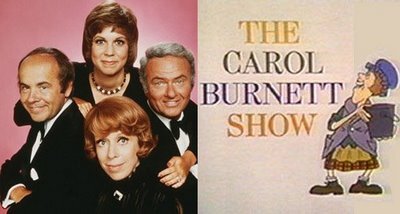
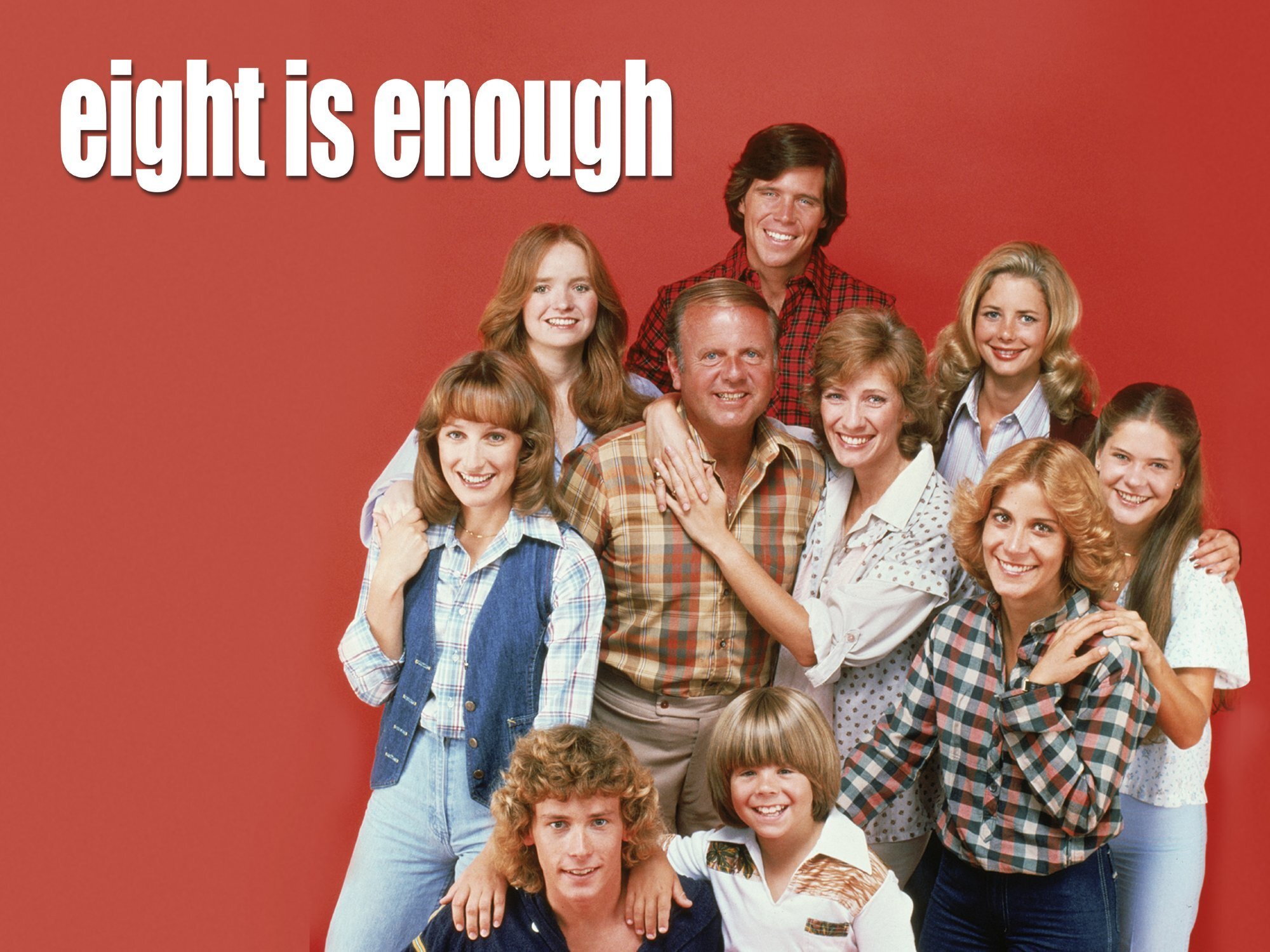
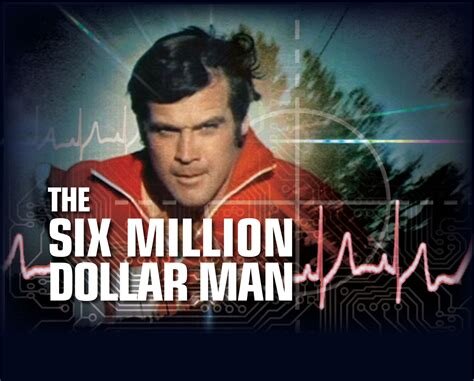

(TV show images scrolling to the left, Un Posto al Sole, The Electric Company, The Honeymooners, I Dream of Jeannie, The Carol Burnett Show, The Six Million Dollar Man, Eight is Enough, The Incredible Hulk.)
As an adult, I decided against owning a TV. I think it was originally that I just didn’t have time for it, I was busy! But then it became a kind of lifestyle choice. I saw so many people spending so much time sitting and staring, and I didn’t want that. And while I still don’t own a TV, now I have Netflix.
And guess what? I still get sucked in! I watched the new Netflix Lost in Space last year after rave reviews from some friends. I really enjoyed it, so when the same friend let me know season two was out, I was ready to watch. I made it last a few weeks, watching a half episode at a time, but all too quickly, it was over.
Y’all know what happened next, right? Yeah, I found another show, conveniently recommended by Netflix. I found myself working on another part of my book with the show on “in the background,” but I realized after the next, next episode started automatically (great programming, Netflix) that far from being in the background, the show was taking up all of my attention, and I was “stuck” in the same place I had been half an hour before.
I admit that I am sometimes smugly proud of my detachment from my phone, social media and video content. The truth of the matter is that I am just as attached as anyone else. Media companies spend millions trying to get (and hold) our attention. And they are very good at it. I wish I had some easy idea on how to manage this, but the only way I am able to keep my consumption low is by not watching AT ALL. If I don’t watch at all for a while, I can stay away.
Trauma Conference?
I was invited to a conference with a trauma focus, which happens much more frequently these days, as “trauma-informed” gains momentum. Ten years ago it was a rare event. I’m always interested in learning something new, so I checked out the keynote speakers.
I was invited to a conference with a trauma focus, which happens much more frequently these days, as “trauma-informed” gains momentum. Ten years ago it was a rare event. I’m always interested in learning something new, so I checked out the keynote speakers. I read the bio and work focus of the first speaker and was right away engaged. I want to know all about their work! Then I checked the second one. This person had a website and had started a group, and was all about training mental health folks (“from new practitioners to people with 20 years in the field”) all about their method.
In case you can’t tell, I started to feel judgmental. I know it’s weird to admit, but I do judge people. I was feeling particularly irritated by what I was reading as a patronizing approach – that everyone, from newbies to experienced practitioners should be using this method. I see myself as a lifelong learner – and certainly I think it’s good for people to continue to learn as they grow in their practice. However, this felt a little formulaic, like, “if only everyone did this the way I do, everything would be better.”
It didn’t help that on their website, they are posed with their arms across their chest, smiling proudly.
So, what do I do when I’m feeling judge-y? I try to pause. On this day, I told myself I was judging, and I told myself to be open minded, after all, there is a foundation, and several books! I decided to listen to a podcast with them (focused on trauma). The person talked about their own tough times, and I was like, “See Martha, don’t judge.” And how their tough times led them to the work that they are doing today. Which seems to me to be really good work. I let the podcast play as I looked at their foundation website.
There I found some blog posts about cultural awareness and practice. Yay! Bonus points. Written by a guest author! Cool, since the person who started the foundation is white. Once again, I chided myself for being judgmental. Clearly this person does understand since they got a guest writer to write about this important topic. Only oops, the guest writer is also white.
Meanwhile on the podcast, the interviewer asks the keynote to tell about a clinical error, and what they learned from it. And the keynote person basically says, “well, I did this thing in a not very skillful way – I don’t think it hurt anyone, but I really realized that it could, and so now I’m very careful.” It sounds like I’m paraphrasing, but I’m not. In essence, they sidestepped the question. Then the interviewer thanked them, as if something important had been said. (You see that I’m back to judging again, right?)
I started thinking about the other teens who were there when he was offered this leadership role. I do believe in offering kids leadership roles.
I believe that people who have been impacted by trauma do gain confidence and a sense of agency by being asked to lead. It’s a great strategy/intervention and acknowledgment of their many skills, sometimes learned because of the trauma they have faced.
However, thinking of this white male teen in Juvenile Hall, a place that was likely not mostly white (I recognize that I’m making a bit of an assumption, but there are plenty of actual numbers on this) being offered a leadership role and it changing his life…made me feel a little sick. I listened on, hoping he would mention his power and privilege in that moment, but he didn’t. His brief comment about mentors and loving people who helped turned my stomach a little more, because it seemed as if he was saying they were not very important.
I want to be clear, I do not think this person is a terrible person or even that they do not do good work. They may be doing great work and helping lots of people. They are working with a tough population and I’m glad that they are doing that work. However, doing trauma work MUST include attention to sociocultural trauma (e.g., racism, sexism, ableism), which includes doing your own work, checking on your own power and privilege, and acknowledging those forces. I don’t believe that we can call our work trauma therapy without it.
In the end, I didn’t sign up. There are plenty of conferences out there, I’ll wait for one that’s a little better aligned with my work.
Encore, NCORE
I just got back from the National Conference on Race and Ethnicity in American Higher Education (NCORE) for 2019. I had never even heard of it until last year, when my friend and colleague from Elk Grove asked me if I was going. I owe her a debt of gratitude, as last year’s conference was transformational for me.
I just got back from the National Conference on Race and Ethnicity in American Higher Education (NCORE) for 2019. I had never even heard of it until last year, when my friend and colleague from Elk Grove asked me if I was going. I owe her a debt of gratitude, as these conferences are transformational for me. It was the first conference I had ever been to where the majority of presenters were people of color. And there aren’t just two sessions to pick from in each time slot – there are a dozen – sometimes more!
This year there were more than 350 sessions from Tuesday to Saturday. There were so many great topics to choose from! Even though I selected my sessions weeks/days/hours before I still found myself standing in the middle of the hallway deciding which session to go over and over again. Given the situation, I will not try to tell you about every single thing I learned. I’ll just focus on a few.
My favorite keynote was Tommy Orange, an author born and raised right here across the bridge in Oakland. He is an enrolled member of the Cheyenne and Arapaho Tribes of Oklahoma, and his first novel, There There is about contemporary Native American life, set in Oakland. The story follows a dozen characters making their way to the big Oakland Powwow. It was on my list at the library, but while watching him speak at the conference, I bought a digital copy. There was something in the conversation that moved me, that connected with the parts of me and my life that are unrepresented in the world, and I knew I had to read it right away.
I went to a great session on improving your skills as a facilitator, The Facilitator In You: Leading Conversations Around Diversity, Equity and Inclusion. I learned a bunch of new things and felt so…validated, just being in the room with other people doing the work. So many frustrations, worries and successes. I often feel alone in the work – I know there are people who cringe when they see me coming. I know when I bring up race and other social justice topics, there are people rolling their eyes and wishing I would just. shut. up. It was rejuvenating to be in a room full of people deep in the work. And I learned so much! Bonus points.
My favorite session, though, was my first session – Preserving, Restoring and Honoring Indigenous Ways in Agriculture: Directions and Implications in Higher Education. There was a wide diversity in presenters, also, which I found a perfect way to begin my NCORE experience. This wasn’t just the old guard talking about how it’s always been done, it was about getting creative for our collective future. Besides learning a lot of completely new information, the participants were phenomenal. They were patient with my ignorance and careful in their instruction. They welcomed me with open arms.
I am truly grateful for my experiences this week. That said, I’m interested in what kinds of conferences you all are attending this year. There are so many things to learn in the world – feel free to leave a comment letting me know about your favorite conference!
Suffering ≠ Resilience
Last week, I read yet another story of a person who had been through tough times who has now soared above what others believed they could become. The story purported to be one of “resilience,” however stories like this one keep us stuck where we are without pointing us forward.
Last week, I read yet another story of a person who had been through tough times who has now soared above what others believed they could become. The article purported to be one of “resilience,” however stories like this one can keep us stuck where we are without helping us move forward.
Stories like this equate suffering with resilience. Suffering is part of the human condition. Surviving tough times is not necessarily a sign of resilience. Many, many people survive difficult times. How well they do as they move through their lives is more related to their supports (known and unknown) than on their particular hardships. Resilience is about thriving, not surviving. Calling someone resilient after hearing that they’ve suffered sounds positive, but lends itself to a sense of complacency. “They are already resilient, they won’t need other supports.”
This story also seems to be saying, “You see, if this person can do it, all of y’all should be able to do it. And if you cannot, or do not, that is your own fault.” This is a fallacy.
It maintains that the responsibility for “making it” lies solely, directly, on the individual, when in truth, there are many systemic barriers to achieving certain goals in the US, including but not limited to sexism, ableism and racism. When individuals achieve, they do so with the help of many people and systems, known and unknown.
Meanwhile, under the guise of holding up this person as a shining light, the article goes on in great detail about the “failings” of their parents (drugs, jail, child protection involvement). The people in stories like this one are most often people of color, however there is room, too, for very poor white people. This part of the story maintains the idea that some families (poor and/or people of color) are “bad” and unable to sufficiently nurture and raise their children. Being silent on the forces of those “isms” I mentioned earlier implies that they do not exist.
Next the story shows the child in a “family” picture with their new family, all white. In the family picture, the African American individual has their hair completely straightened and combed to match the other family members. A nice, white savior family. Who turned this child’s life around. It says nothing of this family’s history or even their hard work raising children. It implies by its lack of explanation, that they were able to do it because they were “good” people. In truth, that family had to work hard to support this child (and others), and that family had other supports – foster youth workers, teachers, counselors, principals, other family members, coaches, friends, co-workers – and others I haven’t named because the article didn’t mention any of them.
Results of a search for “foster family”
Let me be clear – I am a fan and supporter of foster care families. I know how hard they work and love their children. I do not believe that the family in the story are walking around saying, “We’re a good, white savior family, and we should be praised.” I really don’t. However I do believe that articles like these perpetuate that story line. Without the people in the story knowing. Maybe even without the author of the story knowing! This story line is one that is so deeply embedded in American culture it goes unacknowledged.
Stories like this one keep us separate and judgmental, ignores external forces and internal work. And they do nothing to point us in the right direction to encourage actual resilience, which is about believing we have the resources (or can get them) to meet challenges and overcome vulnerabilities. We can foster resilience, in families, friendships and schools. I believe a more powerful, change provoking story would tell us about that journey.
Be Productive
I am resting today. I have an uneasy relationship with rest, one that comes from my own childhood trauma, as well as the sociocultural trauma of being seen as “other” in a white superiority context.
I am resting today. I have an uneasy relationship with rest, one that comes from my own childhood trauma, as well as the sociocultural trauma of being seen as “other” in a white superiority context. Growing up my (North Korean) mother reminded me many times that my behavior would be directly related back to her, and that I needed to be even better than my peers to be seen as “just as good.” My mother’s own childhood experiences and introduction to white cultural values lead her to see non-movement as laziness. I loved reading and would do so in any moment, but my mother saw that as non-productive. I used to hide so I could read in peace. I would drive my sister crazy by locking myself in the bathroom for long periods of time, then hiding my book in the hamper before coming out.
“What?” I would say, innocently. “I had to goooo.”
Even now, many years later, I have a hard time resting. I have been sick since Saturday, congested and coughing, with a headache.
Saturday I worked all day.
Sunday, my one day off, I did laundry, cleaned up, took the dog to the park and prepped for the week. I did take a nap – but woke up feeling guilty so answered emails for an hour after that.
Monday I took the dog to the park, went in to my office to meet with my colleague for an interview, and by the time we were done I could hardly think straight. I called off dinner with a friend (sorry!), and participated in a very cool interview with students in Singapore. Then I called in sick for Tuesday (it’s only the second time all school year I’ve done so).
And so here I am, supposedly resting. But is it resting when the guilt keeps me from sitting down? From reading, even? From reading books I want to read for work?! The values of white supremacy culture (see a list plus antidotes from Kenneth Jones and Tema Okun, 2001 here) have me riding the guilt train. Starting with a sense of urgency that I get from work partners and colleagues is so strong that I feel like I need to be checking my email all the time. Quantity over quality is telling me I need more…things, more deliverables, more speaking engagements, more more more. I am even feeling guilty for not going to the gym today. The gym! Can you imagine me, coughing and blowing my nose while I work out?
And so, here I am. Producing something. Done.
Sociocultural Trauma
I know that people don’t really want to talk about trauma. Trauma in whatever form can be disheartening, scary and sometimes just plain sad. Lately it’s been different, though. These days, I find myself talking more and more about sociocultural trauma - trauma caused by implicit and explicit bias (e.g. racism, sexism, ableism).
I know that people don’t really want to talk about trauma. Trauma in whatever form can be disheartening, scary and sometimes just plain sad. Lately it’s been different, though. These days, I find myself talking more and more about sociocultural trauma - trauma caused by implicit and explicit bias (e.g. racism, sexism, ableism). This topic is even harder to talk about, because it requires each of us to examine, acknowledge and actively address our own implicit and explicit biases.
Although I regularly tell participants that research shows that trauma happens to people across all kinds of socioeconomic/racial/gender boundaries, it still happens, I think, that people in my trainings start to believe that we are talking about “those people over there” with trauma. Not because they are bad people, but probably because it is easier to think of it that way, a little bit removed from one’s self. Then when I start talking about common implicit biases, people often become uncomfortable. No one wants to think of themselves inadvertently harming other people! And yet we do. All of us.
In one of my schools there is a blind educator. Early on in my work with the school, I said something like, “Look at this diagram,” then realized that she wouldn’t be able to do so, and that me not having made it available to her and then referencing it was a microaggression. As soon as I realized it, I started noticing other things that I say which show the same bias (examine). The English language is SO biased towards people with sight! There are many terms and phrases that I use all the time.
I eventually had a conversation with her about it, and apologized (acknowledge). Eventually because at first, I was too embarrassed to even bring it up. She was gracious and accepted my apology and was helpful, too. She let me know that there are some phrases and figures of speech that she can laugh about, and that there are others that really do bother her. She even took part in a planned role play for handling a microaggression. I like this person. I really, really do not want to harm her.
And yet, months later, I still catch myself doing it. When I wrote her to ask for her permission for this post, I wrote, “Looking forward to meeting with you” because I knew it wouldn’t be appropriate to write “See you next week.” But guess what? Looking forward is still sight-centric! (actively address)
The educator in question is actually able to hold this topic lightly – but that does not mean that I need not try. Because I know that sociocultural trauma impacts people, not only in the thinking/learning part of their brains, but also at the feeling part of the brain (which I wrote about here). That means that maybe, on a day when I’m stressed out, a minor comment that I could laugh off on other days might push my rider right off my horse.
We don’t need to be perfect, and we still need to do our work: examine our way of being in the world to uncover our biases, acknowledge them, and then actively work to address them.





